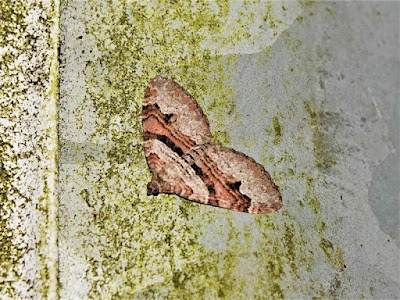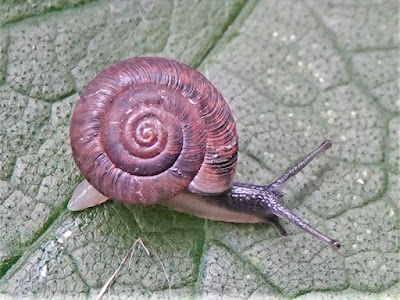9.0°C > 13.0°C: Another clear start with low cloud soon arriving – from the East this time. Brighter intervals after 08:00. Light / moderate easterly wind. Very good visibility.
Sunrise: 04:46 BST: as early as it gets
Out of time today: photos will be added tomorrow
! = a new species for me here this year
!! = a new species for me in Shropshire
Priorslee Balancing Lake: 05:00 – 06:10 // 07:10 – 09:20
(133rd visit of the year)
Bird notes:
- a Sparrowhawk overhead. It seems ages since I last noted one here. They are very secretive during the breeding season.
Counts of birds noted flying over:
- 2 Canada Geese: inbound together
- 2 Stock Doves: together
- 16 Wood Pigeons
- 2 Herring Gulls
- 3 Lesser Black-backed Gulls
- 1 Sparrowhawk
- 16 Jackdaws
- 1 Rook
Hirundines etc. noted:
- c.30 Swifts at 05:45: none by 08:00
- 4 Barn Swallows
- 2 House Martins
Warblers noted (the figure in brackets relates to birds heard singing):
- 1 (1) Cetti's Warbler
- 10 (8) Chiffchaffs
- 10 (8) Reed Warblers
- 7 (7) Blackcaps
'nominal' warbler:
- 1 (1) Goldcrest
Counts from the lake area:
- 2 Mute Swans
- 3 (2♂) Mallard
- no Moorhens
- 31 + 10 (6 broods) Coots
- 4 Great Crested Grebes
- 3 Lesser Black-backed Gull: on the football field 05:55
- 1 Grey Heron: flew off 05:20
Noted on the street lamps poles pre-dawn:
Moths:
- 1 Flame Carpet Xanthorhoe designata
Noted later:
An early departure meant fewer insects. Mostly cloudy again
- 1 Flame Carpet Xanthorhoe designata
Noted later:
An early departure meant fewer insects. Mostly cloudy again
Butterflies:
- none
- none
Moths:
- Common Marble Celypha lacunana
- Common Marble Celypha lacunana
Bees, wasps etc.:
- Honey Bee Apis mellifera
- Buff-tailed Bumblebee Bombus terrestris
- mystery bumblebee, perhaps a worn Vestal (or Southern) Cuckoo Bee Bombus vestalis.
- Honey Bee Apis mellifera
- Buff-tailed Bumblebee Bombus terrestris
- mystery bumblebee, perhaps a worn Vestal (or Southern) Cuckoo Bee Bombus vestalis.
Hoverflies:
The first name is according to Stephen Falk. The name in square brackets is that given by Obsidentify. The scientific names are common. The species are presented in alphabetic order of those scientific names.
- Buttercup Blacklet Cheilosia albitarsus [Late Buttercup Cheilosia]
- Bumblebee Blacklet Cheilosia illustrata
- Tapered Dronefly Eristalis pertinax
- Common Dronefly Eristalis tenax
- Migrant Field Syrph Eupeodes corollae [Migrant Hoverfly; Migrant Aphideater]
- Tiger Hoverfly Helophilus pendulus
- Chequered Hoverfly Melanostoma scalare [Long-winged Duskyface]
- Bumblebee Plume-horned Hoverfly Volucella bombylans
- Buttercup Blacklet Cheilosia albitarsus [Late Buttercup Cheilosia]
- Bumblebee Blacklet Cheilosia illustrata
- Tapered Dronefly Eristalis pertinax
- Common Dronefly Eristalis tenax
- Migrant Field Syrph Eupeodes corollae [Migrant Hoverfly; Migrant Aphideater]
- Tiger Hoverfly Helophilus pendulus
- Chequered Hoverfly Melanostoma scalare [Long-winged Duskyface]
- Bumblebee Plume-horned Hoverfly Volucella bombylans
Damsel-/dragon-flies:
- Azure Damselfly Coenagrion puella
- Common Blue Damselfly Enallagma cyathigerum: just two
- Azure Damselfly Coenagrion puella
- Common Blue Damselfly Enallagma cyathigerum: just two
Other flies:
- Black Snipefly Chrysopilus cristatus: many hundred males noted; no females seen
- long-legged fly Dolichopus wahlbergi
- dagger fly Empis livida
- dance fly Hybos culiciformis
- Grouse Wing caddis fly Mystacides longicornis
- Scorpion Fly Panorpa sp.
- !!fly Paykullia maculata
- Yellow Dung Fly Scathophaga stercoraria
- Black Snipefly Chrysopilus cristatus: many hundred males noted; no females seen
- long-legged fly Dolichopus wahlbergi
- dagger fly Empis livida
- dance fly Hybos culiciformis
- Grouse Wing caddis fly Mystacides longicornis
- Scorpion Fly Panorpa sp.
- !!fly Paykullia maculata
- Yellow Dung Fly Scathophaga stercoraria
Bugs etc.:
- !Mirid bug Deraeocoris flavilinea nymph
- !Mirid bug Deraeocoris flavilinea nymph
Planthoppers, lacehoppers etc.
- none
- none
Beetles:
- Alder Leaf Beetle Agelastica alni
- Harlequin Ladybird Harmonia axyridis var. succinea
- Common Malachite Beetle Malachius bipustulatus
- False Blister Beetle: Oedemera lurida or O. virescens
- Alder Leaf Beetle Agelastica alni
- Harlequin Ladybird Harmonia axyridis var. succinea
- Common Malachite Beetle Malachius bipustulatus
- False Blister Beetle: Oedemera lurida or O. virescens
Molluscs:
- White-lipped Snail Cepaea hortensis
- unidentified Cepaea sp.
- White-lipped Snail Cepaea hortensis
- unidentified Cepaea sp.
Spiders:
- Long-jawed Orb-web Spider Tetragnatha sp.
- money spider, probably Erigone sp.
- Long-jawed Orb-web Spider Tetragnatha sp.
- money spider, probably Erigone sp.
New flowers noted
None
Two Lesser Black-backed Gulls check out the running track marked out on the football field.
My first Sparrowhawk for ages here. This is a female, the larger sex, as with many birds of prey. This species always seems to 'disappear' when breeding and often the first I realise they are still around is when I hear the newly-fledged juveniles calling to be fed.
Robins are often very friendly at The Flash where they get fed. It is unusual to get one to pose here. The plumage looks rather faded as it comes to the end of the breeding season. In August this species will be hard to find as they hide away while going through a complete moult.
My first Flame Carpet moth Xanthorhoe designata here. At least this one, unlike those I noted elsewhere during May, has the decency to look flame-coloured.
A mystery bumblebee. Further research suggests it may well be a male Red-tailed Bumblebee Bombus lapidarius on the basis of the white on the face and collar. There is the merest hint of red in the tail and males are typically paler.
This adds nothing to the debate!
A Bumblebee Blacklet Cheilosia illustrata. Just about the only Cheilosia hoverfly that is not all-black and therefore relatively easy to identify.
A male Tapered Dronefly Eristalis pertinax...
... as is this female (the eyes do not meet). To me these seem to have been in larger numbers than in previous years. Meanwhile...
A Bumblebee Plume-horned Hoverfly Volucella bombylans. I have still to find any individuals of the form with a buff tail this year.
A close-up of the plume-horn (the antennae). The antennae of this genus are unusual in being plumed: most hoverflies have short and simple antennae.
Wildlife does not always obey our rules. Two male long-legged flies Dolichopus wahlbergi (the two with swellings on their middle tarsus) attack a lone female.
An evil-looking fly. It is the dagger fly Empis livida.
The dance fly Hybos culiciformis.
A new species of fly for me. It seems to be Paykullia maculata . Flies in this group, the rhinophorids, attack woodlice.
The red at the base of the elytra (wing cases) identifies this as a Common Malachite Beetle Malachius bipustulatus.
You would think this snail would be easy to identify. You would think... An unidentified Cepaea sp.
On the boxing ring I found this small money spider, probably Erigone sp.
'Plane(?)' of the day. A Cameron Z-120 hot air balloon. The '120' refers to the cubic capacity of the envelope. The owner of this balloon lives in the north-west suburbs of London so quite why in the Telford area is unclear. Cameron balloons are made in Bristol and tested near there.
(Ed Wilson)
In the Priorslee Avenue tunnel:
------------------------------------------------------------------------------------------------------
In the Priorslee Avenue tunnel:
Only noted
Moths:
- 1 Common Pug Eupithecia vulgata
- 1 Common Pug Eupithecia vulgata
Spiders:
- 1 probable Bark Sac Spider Clubiona corticalis.
- 1 probable Bark Sac Spider Clubiona corticalis.
The tunnel seems to be the place to find Common Pug moths Eupithecia vulgata.
Clearly a stout-sac spider this one shows a larger-than-usual 'point' at the end of its abdomen which is perhaps why Obsidentify was confident to call it a Bark Sac Spider Clubiona corticalis.
(Ed Wilson)
------------------------------------------------------------------------------------------------------
The Flash: 06:15 – 07:05
(136th visit of the year)
Bird notes:
- Peace: no additional (sub)adult Mute Swans remain.
- at least four Great Crested Grebes. I suspect a fifth.
Bird(s) noted flying over here:
- 2 Jackdaws
Hirundines etc. noted:
- 1 House Martin
Warblers noted (the figure in brackets relates to birds heard singing):
- 4 (3) Chiffchaffs
- 1 (1) Blackcap
'nominal' warbler:
- 1 (1) Goldcrest
Noted on / around the water:
- 231 Canada Geese: includes three goslings
- 36 Greylag Geese
- no Canada x Greylag Goose
- 2 + 3 (1 brood) Mute Swans
- 24 Mallard: no ducklings seen: sexes not determined
- 5 (4♂) Tufted Duck
- 5 + 1 (1 brood) Moorhens
- 19 + 3 (2 broods) Coots
- 4 or 5 Great Crested Grebes
Noted elsewhere around The Flash:
Beetles:
- Alder Leaf Beetle Agelastica alni
- Alder Leaf Beetle Agelastica alni
Spiders:
- Long-jawed Orb-web Spider Tetragnatha sp.
(Ed Wilson)
Sightings from previous years
2008
Telford Town Centre
A singing Sedge Warbler by the entrance to the Blue Willow car park.
(Ed Wilson)
- Long-jawed Orb-web Spider Tetragnatha sp.
(Ed Wilson)
------------------------------------------------------------------------------------------------------
Sightings from previous years
2008
Telford Town Centre
A singing Sedge Warbler by the entrance to the Blue Willow car park.
(Ed Wilson)






















